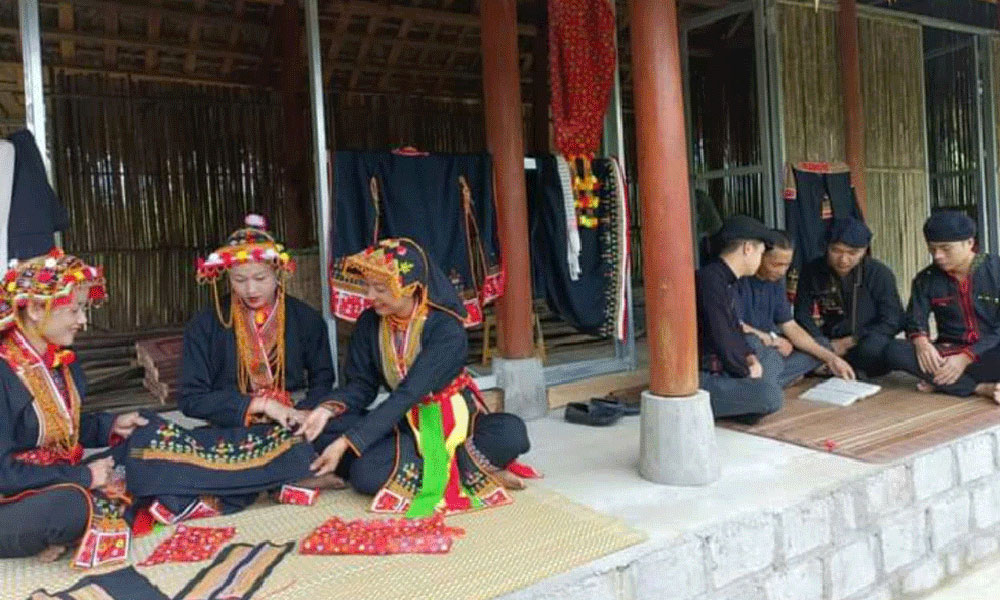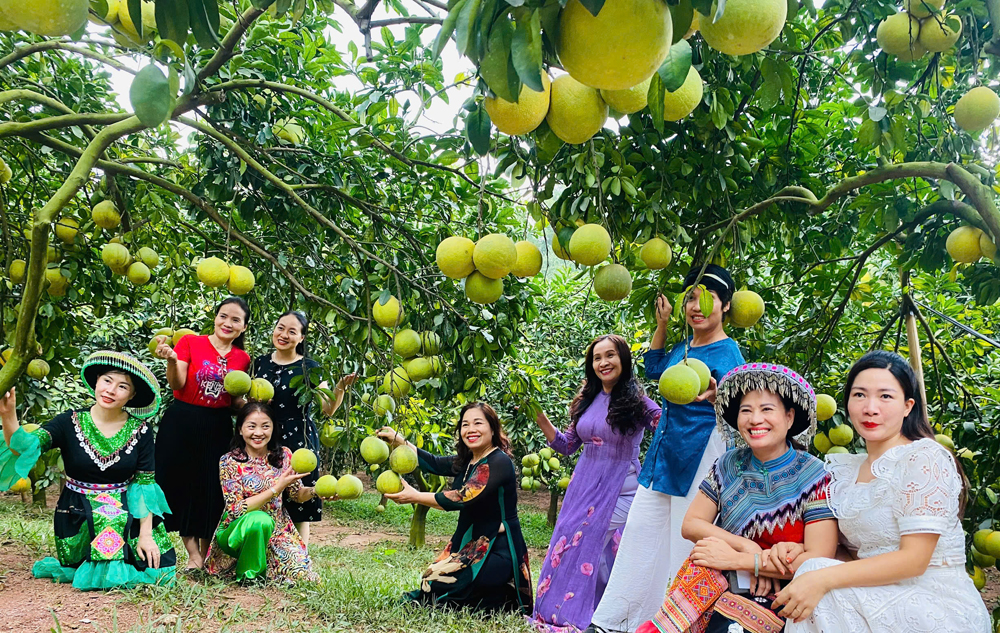Unlocking tourism potential of tea-growing area in the Northwest region
As the largest tea-growing area in the country with many famous tea brands, the Northeast region possesses great potential to develop tourism. Tea trees have also contributed to ensuring sustainable livelihoods and diversifying the region's tourism products.
Provinces in the Northeast region are home to vast green tea areas with names that coincide with the names of villages, communes, or local mountains and rivers, such as the Ban Ven (Bac Giang Province), Hoa An (Lang Son Province), Tan Cuong and Khe Coc (Thai Nguyen Province), Ngoc Linh (Ha Giang Province), and Khau Mut (Tuyen Quang).
 |
|
Harvesting tea in Ven village, Yen The district, Bac Giang province. |
While Thai Nguyen and Tuyen Quang Provinces are famous for green tea, black tea, and yellow tea, Bac Kan and Ha Giang Provinces are known for the signature Shan Tuyet tea, and Cao Bang wins the hearts of tea lovers for its oolong tea.
These tea-growing areas boast beautiful natural landscapes and diverse terrain of the Northeast region with cliffs and hills, surrounded by forests, terraced fields, valleys, and streams. They are also home to the diverse and unique culture of ethnic minority communities, as well as their tangible and intangible cultural heritages.These factors provide the areas with invaluable resources to create attractive tourism products.
Taking advantage of the above, in recent years, many provinces in the region have developed tourism activities in their tea-growing areas, such as tours to tea hills and tea production and processing facilities where visitors can experience tea picking, drying and production techniques while enjoying tea and listening to stories about tea culture.
In Thai Nguyen Province - one of the provinces with the leading tea production and growing area in the country, a community-based tourism model has been established in tea-growing areas such as Tan Cuong, La Bang, and Khe Coc, allowing tourists to visit tea hills, stay in local homestays and join cultural activities of the locals.
Meanwhile, visitors to Ha Giang Province can take part in tours to local tea hills run by Phin Ho and Ho Thau Tea Cooperatives and Viet Shan Tea Company. They can also explore the growing area of “shan tuyet” tea, a famous specialty of Phin Ho, a mountainous village in the most remote region of Thong Nguyen commune, next to Tay Con Linh Mountain.
Notably, in Cao Bang, Kolia Tea Plantation Farm has been developed into an eco-tourism area with many tourist products, such as sightseeing tours, accommodation, and entertainment activities at tea hills, and excursions to explore Phja Oac - Phja Den National Park, the Dao people's earthen house, and Ban Phuong bamboo garden. The farm welcomes about 10,000 visitors per year.
However, according to experts, most tourist activities in the tea-growing areas of the Northeast region are one-day trips, and they have not yet fully tapped the areas’ tourism potential.
Speaking at the workshop discussing tourism development in tea areas in the North-eastern region, which was recently held in Hanoi, Dr Le Quang Dang from the Institute for Tourism Development Research revealed that the Institute's research team has just surveyed three groups of tourists, businesses and communities living in the North-eastern tea-growing areas.
The survey showed that up to 42.8% of visitors said they do not stay overnight in the tea-growing areas due to lack of accommodation facilities or the accommodation facilities are not comfortable enough. The average daily spending of visitors is still low, mainly under 1 million VND/day, due to the lack of attractive tourist products and services.
Given the situation, Dr Le Quang Dang suggested local authorities devise a plan to develop tea areas to boost tea production while serving tourist activities. Further attention should be paid to improving infrastructure and technical facilities for tourism development in tea areas, especially the transport network, in a bid to facilitate convenient travel for visitors.
In addition, it is necessary to diversify tourism products in tea areas, which can integrate the tea industry and tea culture with culture, festivals, and landscapes in the locality.For his part, Associate Professor Dr Bui Thanh Thuy, Head of the Faculty of Tourism, Hanoi University of Culture, emphasised that building attractive cultural tourism products in each tea area requires thorough research to select unique cultural values and the most natural way to introduce them to visitors.
He also stressed the need to strengthen the role of the community in managing, organising, and promoting their cultural identities. Thus, local communities should be encouraged to directly participate in the protection and promotion of their cultural heritage.
As a tea culture researcher, Trinh Quang Dung from the Vietnam Cuisine Culture Association affirmed that Vietnam, listed among the top five largest tea exporters worldwide, has a unique tea culture. This creates huge potential for the country to develop tourism among tea-loving visitors.
He reiterated that Vietnam should develop a strategy for enhancing trained human resources in tea tourism, such as tea artisans and tour guides with the proper knowledge to spread Vietnamese tea culture to visitors at home and abroad.
 Bắc giang
Bắc giang















Reader's comments (0)